Some residences simply require a key to enter. But a large number of residential buildings require residents to scan a keycard or type their unique password into a keypad in order to gain access. The image below is for apartment building 309 and “line” 3~4 but these devices are also used for non-apartment residential buildings as well. Let’s say you wish to access apartment 403.
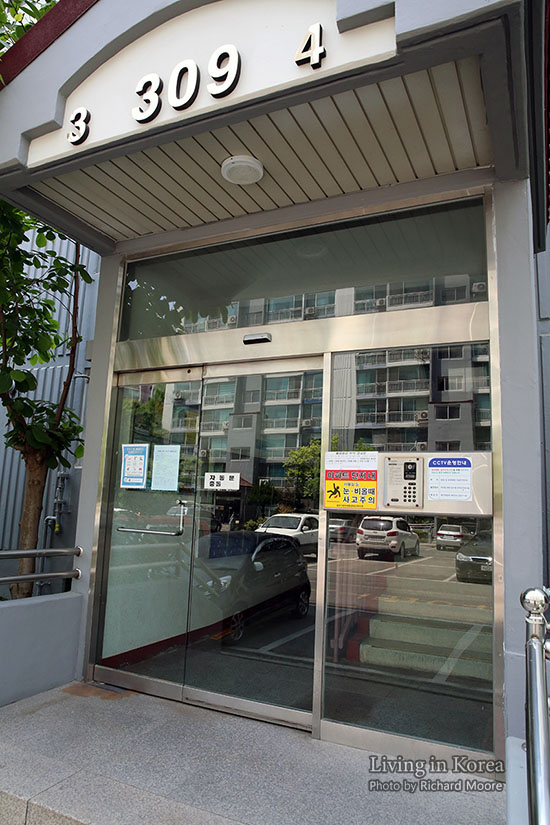
There is a keypad to the right of the door in the image above. Shown below, this particular model states that residents type their specific apartment unit number (403) the # and then your password for the door to open. Different brands or models might ask for a different sequence, like # 403 # password. Double check with the real estate or landlord and if possible have them demonstrate and then you confirm by doing it yourself. To avoid losing the number and sequence, you might want to write it down on the housing contract or leaving a memo in your phone.

It is normal for you to be given a keycard; either a full credit card size or a mini keycard you can attach to a keychain. The unit shown here does not have that capability. Sometimes you will not get a keycard for the entry machine downstairs nor for your specific apartment unit.
If you are visiting someone, type their apartment unit number and the 호출 (呼出 , hochul) button. Sometimes written as “call”, this will ring up the resident. Once the resident answers this call, you can hear them and they can buzz you in. Before the resident answers, they will be able to see and sometimes hear you.
Having received access to the building, you'll walk past the mailboxes. As petty theft and mail theft are very low in this country, don't expect to see much of any security other than a security camera filming the mailboxes. Every mailbox also has a lock but it is so rare for them to be locked you probably will not receive your mailbox key when you move in. You can see the CCTV unit at the top of the image below with a white dome with black background over the door.
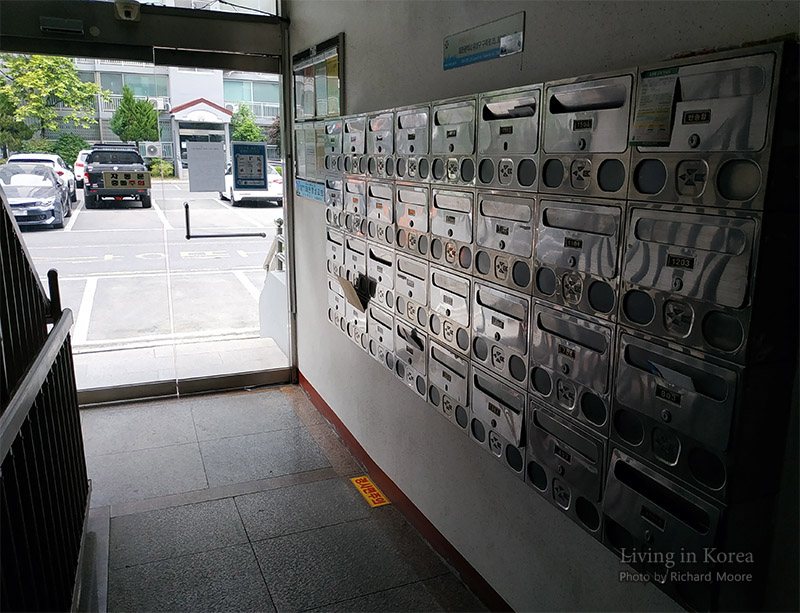
Each mailbox has the apartment unit number of it. There is a sign above these mailboxes showing the address in both address systems as well as the official Romanization of the addresses but. If it is hard to rememeber your address, either style, don't forget that it is written on the rear side of your Residence Card. Worst case, when you need your address pull out the card, turn it over, and hand it to the person who needs that information.
Even if you live in the same home for a long period of time, you might get someone else’s mail on occasion. Telling the post office it went to the wrong person is surprisingly easy. Look for the mailbox with a word on it, instead of a number. It should say 반송함 (返送函, bansongham). Just put the letter that was incorrectly sent to you into there and you are done.
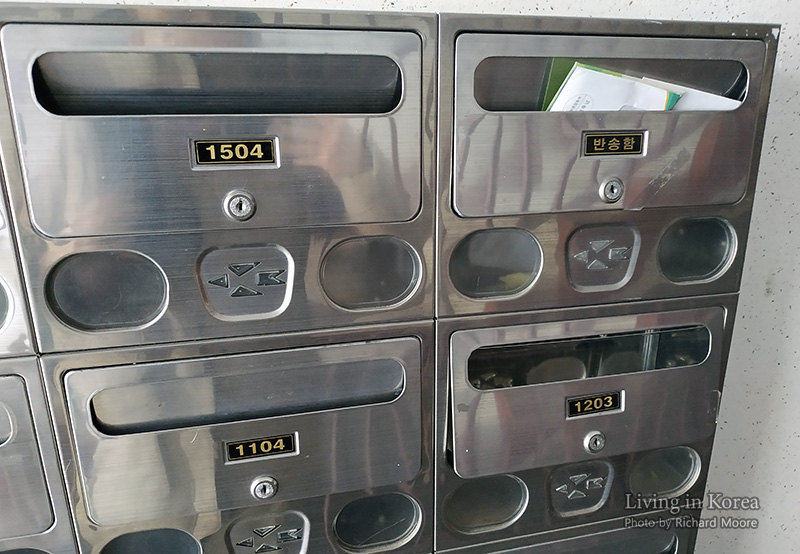
Some apartments have a specialty return mailbox located just to the side of the standard mailboxes. If you want to view this return mailbox more clearly, click the image to see a large size image of just this mailbox.
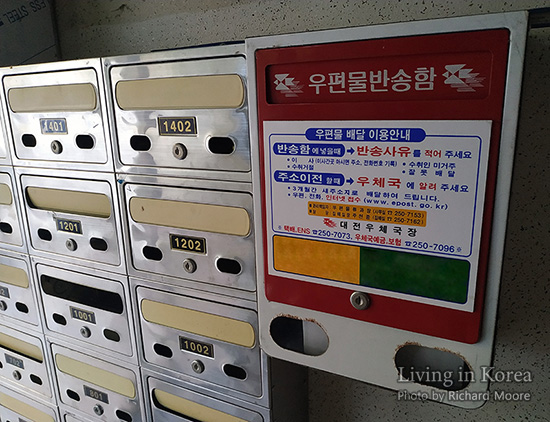
In this larger joint purpose building with commercial and residential space, there is a section of the floor dedicated to returning mail and packages.
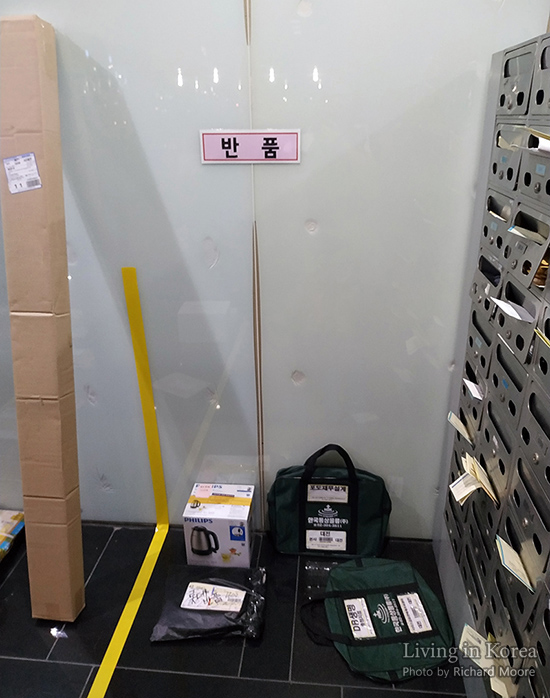
If you want to be extra clear that you are wanting a letter or package to be returned to sender you can write one word on it; 반송 (返送, bansong). You'll notice that these first two morpheme blocks are the same as the box shown in the image above.
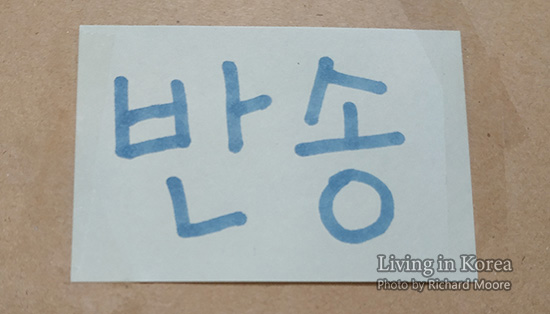
As mail is intimately connected with address, some apartment post this sign reminding people of the new address system and helping them to remember their zip code, which is something not commonly memorized here. Sometimes this is located inside of an elevator on the inner doors.
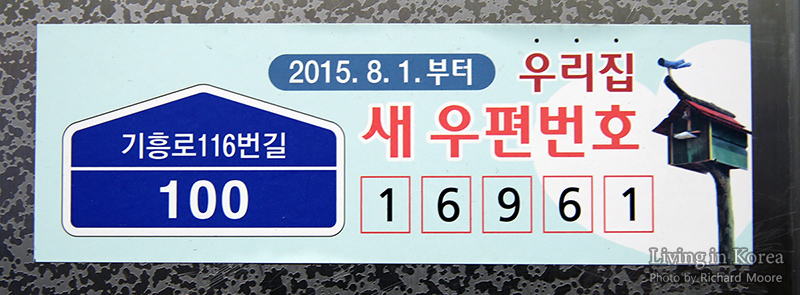
Announcements and notices are placed either on an official board near the mailboxes or inside of an elevator. These notices are apartment sanctioned notices and as such they will have a stamp with an expiration date on them. Please do not remove or add any notices to these are this is the responsibility of the apartment management. If you want to add a notice, talk with the management of the apartment.
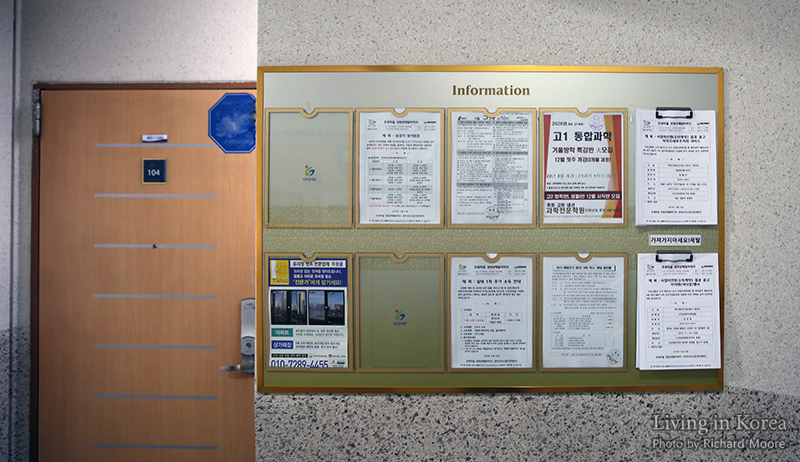
Now that we’ve successfully entered the building, go ahead and climb the stairs or ride an elevator up and arrive at the door.